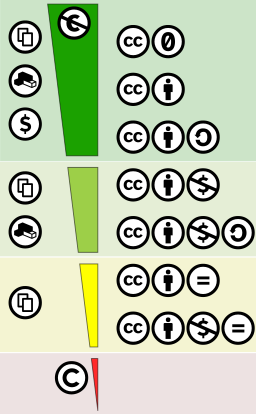This week I was excited to find and review an application or tool that I had not previously used. I liked a lot of the tools that we talked about but realized that my entire experience with Padlet was to post my intro picture for #eci831 and #eci834 but that I had never truly spent time discovering what the tool was capable of. I was also inspired by my former classmate Megan from #eci834 who retweeted another’s use of Padlet on Twitter. So…here goes.
Account
When signing up for Padlet there were a few different options: You can sign up for an account with your Google account, your Facebook account, or via email. I like this as I have enough different passwords and usernames to remember, linking this to my Google account is easy and I can (and have) created a Google account that I use primarily for my school-based work and bookmarks so this is very convenient. Add the self-esteem boosting mandatory “click this box” portion of signing up, and who could be upset???

Dashboard
The dashboard is simple and easy to follow. I like that there is a space for Recent activity for if you are sharing your Padlet with others so that you can see any updates that have occurred. Overall, it is exactly what I would expect from such a page to help organize your different pages.
Create
This is where I feel Padlet really shines. They have generic blank templates that you can use and they also have more stylized templates to help you come up with ideas. I right away started with the stylized templates to see what Padlet is capable of. Their premade templates include a Moodboard, Bookmarks, Q&A, Kanban Board, KWL Chart, Video Playlist, Storyboard, Organization chart and a space to request a specific type of template. Each of these has a Preview option to help create ideas of how the tool can be used. After reviewing each and playing with the different styles, I decided to create my own Padlet.
I decided to follow the lines of the example above and create a grid-style Padlet. We are moving to a new unit in my Social 9 class right this week and I thought this may be a great way to collect some resources. I started by choosing a background and coming up with column headings. For now, I chose to be the only one who can edit the Padlet, given my intention of its use. Then I started to collect some (rather random) resources. As soon as I started to input information, I knew that I liked this tool.

I loved that you can provide links, you can watch videos right on the Padlet screen or move to the hosting website, you can drag and drop for reordering items on the board. The tool is very user-friendly and allows for a lot of personalization. I could easily see how I could plan activities and lessons on Padlet and share resources and links easily with my class. I invite you to check out my Padlet and play with the videos and see how easily you can navigate the board!
Strengths
In terms of strengths, I feel that Padlet is a great tool. In fact, I was very happily sharing it with my colleagues today after school and they were excited with how easy it was to use. The easy way to add (or subtract) items from the board, to move them around, and to share with others is great. If you were to collaborate with others, you can easily add to the board from Android and Apple apps on your phone or desktop versions including a Chrome extension and Chrome app. There are paid versions for relatively reasonable prices for educators and for businesses. “Backpack” (school) accounts allow for unlimited students under a teacher account.
The supports for schools are actually quite impressive: they integrate with Google apps and LMS, they have better privacy and security options, and they will even send you a hand-written love letter to thank you! They are also working on analytics and content filtering so it seems they are continuing to develop the platform.
Probably most impressive is their refund policy. I have never seen ANY refund policy that is as customer-centered as this one. You seriously need to check it out. They will do back-refunds and work with you to ensure you are happy if the tool does not meet your needs (or if you just stop using it)!

Weaknesses
There is a bit of restriction on the free account in the limit of 4 Padlets and the limit in options but, as it is quite affordable if you are going to use it regularly, I feel that this can be avoided. I guess you could also create multiple accounts but then you would need to remember multiple usernames and passwords and I am not good at that on the best of days…..
Given that a paid teacher account allows for unlimited students, teachers that team teach content or students may be able to collaborate on one account if they wanted or needed to save on costs to the school or teacher wallet, I could not find Terms of Service that said this was not allowed but I may not be correct on this.
Potential
This is something that I think I would use for planning primarily. I can see myself using it much as my demo board is set up, to help guide an inquiry-based unit or project, or to collaborate with other teachers to share resources and links. In talking about sharing in previous posts, I feel that I may have solved my dilemma of how to organize, share, and collaborate with others, I really like the visual but organized flow of this tool. This is a tool that I will be using in the future.
Another fun fact is that there is a plugin for Padlet on WordPress (if you host your own site) where you can embed a Padlet in your post, something that I find very interesting! Now, I think I may be fully convinced: I may just have to get my own domain! (I need to figure out how first though…. anyone know how to go about that?)
Have you ever used Padlet? If so, how did you like it? Would you use it again? If you have a moment to pay around with it, do you agree with my assessment of it? I would love to hear from you!








